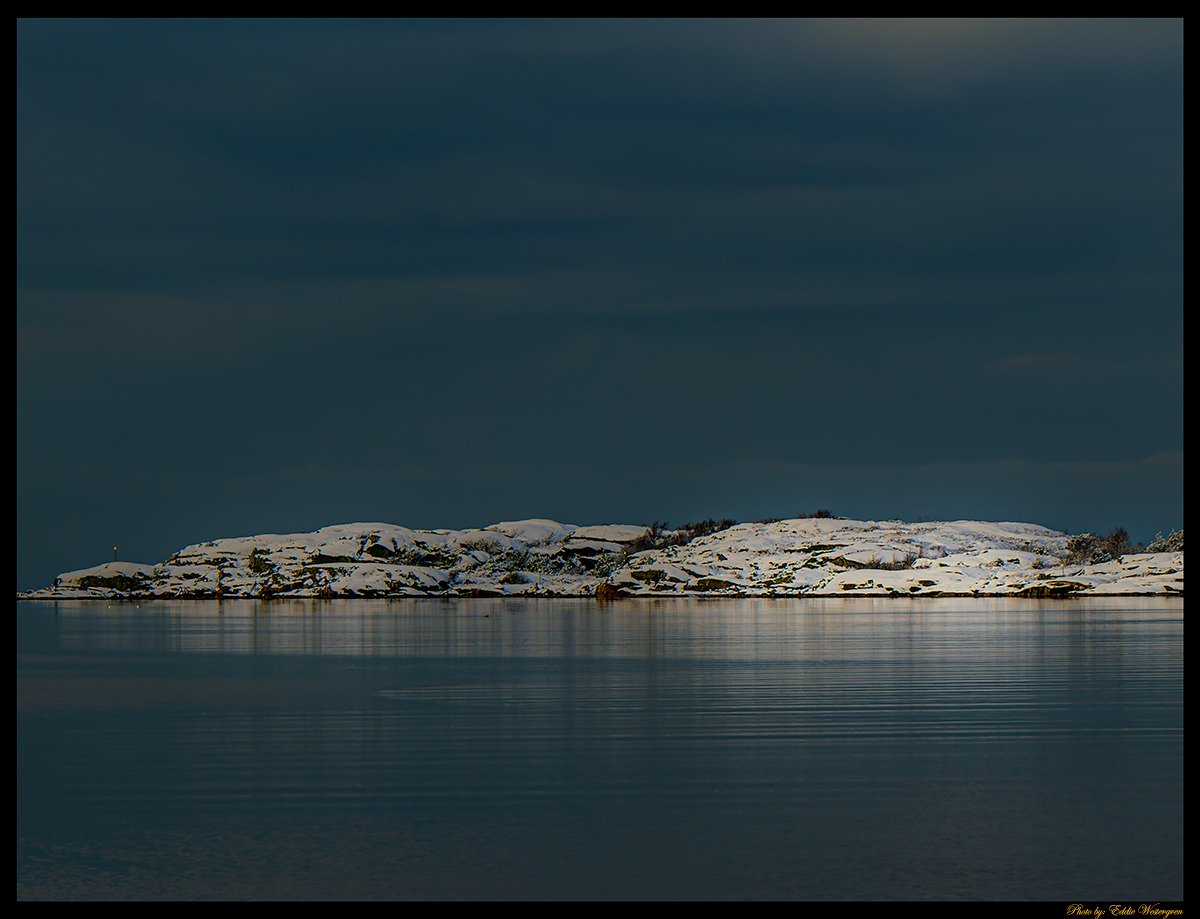
Björlanda with snow,
is nestled on the northwestern coast of Hisingen in Gothenburg, transforms into a tranquil winter wonderland during the colder months. As the year shifts into deep winter, the area takes on an entirely different character from its lively summer scene, known for sailing, fishing, and the hum of boat engines around the marinas.
The snow-covered landscape around Björlanda Kile becomes a serene retreat, where nature quietly reigns. Frost settles gently on the reeds along the shoreline, and the usually bustling marina lies silent, its boats now pulled ashore and wrapped in tarpaulins, awaiting spring. The sea, which normally reflects the brilliant summer sun, appears darker, sometimes calm, at other times whipped into waves by the relentless winds coming in from the Kattegat. During calmer days, a thin layer of ice may begin to form along the shore, catching the glimmers of pale winter sunlight.
The islands dotting the coastline,
visible just offshore, appear ghostly in the muted light. The rocks are slick with frost, and the trees that cling to the island slopes are bare, their skeletal branches standing out against the pale sky. Occasionally, a soft mist drifts in from the sea, enveloping the islands and the coastline in a veil of mystery. It’s during these moments that the solitude of Björlanda is most profound. The usual sounds—birds, boats, people—are muffled by the snow, replaced only by the crunch of boots on the icy ground and the distant caw of a lone seagull braving the cold.
Venturing inland, the fields and meadows that surround Björlanda lie quiet beneath a thick blanket of snow. The scattered farmhouses, with their red wooden walls and white trim, look like something out of a postcard, their chimneys emitting thin wisps of smoke that drift lazily into the cold air. The land, usually dotted with grazing animals during the warmer months, is now home to only the hardy wildlife that survives the Scandinavian winters. You might spot a deer bounding across the snowy fields or a fox quietly slipping through the forest, its bright orange coat standing out against the white backdrop.
As daylight fades
shorter than ever during winter in Sweden—the landscape takes on a more magical, almost surreal atmosphere. The sun hovers low in the sky, casting long shadows and bathing everything in a golden glow that reflects off the snow. The sky turns from a pale blue to shades of pink and orange before eventually fading into twilight. In the distance, the streetlights of Gothenburg begin to flicker on, their glow faintly visible from this secluded corner of Hisingen.
Björlanda’s coastal trails, popular with hikers in the summer, become more isolated and challenging in the snow. The icy winds from the sea make each step a reminder of the unforgiving nature of winter here, but for those who dare to walk them, the rewards are breathtaking. The views out over the archipelago are unparalleled, with the islands rising like dark silhouettes against the pale sea. And on clear nights, if you’re lucky, you might even catch a glimpse of the northern lights dancing across the sky, their green and purple hues shimmering faintly over the horizon.
Winter in Björlanda
is a time for quiet reflection, where the landscape’s raw beauty is on full display. The calm, the stillness, and the muted colors of the season invite a slower pace of life, where one can truly appreciate the natural wonders of this coastal paradise. Though the chill may bite, there is warmth to be found in the peacefulness of a winter’s day by the sea, where time seems to stand still, and the beauty of nature takes center stage.